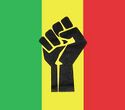Kwalawi: Difference between revisions
No edit summary |
|||
| Line 49: | Line 49: | ||
==History== | ==History== | ||
The Kwala have lived in the area of present day Kwalawi for centuries, dating at least as far back as the [[Eastern Crusade]]. Following the [[Hesperidesian Revolutions]], the country proclaimed independence. | The Kwala have lived in the area of present day Kwalawi for centuries, dating at least as far back as the [[Eastern Crusade]]. | ||
In 1972, as armed uprising swept across much of Eastern Hesperidesia, Kwalawan rebels began to rise up, attacking Imperial outposts and government buildings throughout the area. | |||
Following the [[Hesperidesian Revolutions]], the country proclaimed independence. | |||
==Politics== | ==Politics== | ||
Revision as of 16:00, 7 December 2023
This article is incomplete because it is pending further input from participants, or it is a work-in-progress by one author. Please comment on this article's talk page to share your input, comments and questions. Note: To contribute to this article, you may need to seek help from the author(s) of this page. |
Republic of Kwalawi | |
|---|---|
|
Flag | |
| Capital | Dombrusi |
| Largest city | Tsambawa |
| Official languages | Latin, English, Kwala |
| Recognised regional languages | Jafa, Bungu, Charvonian, others |
| Religion | Roman Catholic |
| Demonym(s) | Kwalawan |
| Government | Republic |
• President | Octavius Bemba |
| Independence | |
| 1988 | |
| Area | |
• Total | 530,400 km2 (204,800 sq mi) |
| Population | |
• 2014 census | 4,113,077 |
• Density | 7.75/km2 (20.1/sq mi) |
| Currency | Kwalawan tambala |
| Date format | dd-mm-yyyy AD |
| Driving side | right |
| Internet TLD | .kwa |
Kwalawi is a sovereign state in eastern Hesperidesia, in Astyria.
Kwalawi's capital is Dombrusi. Its largest city is Tsambawa. It borders Bungussi to the north, Jafala to the east and south, Red River Free State to the south and east and the Blackhelm Confederacy to the west. Kwalawi's southern border with Jafala is defined by the Red River. Covering approximately 530,400 square kilometres (204,800 sq mi), it is the third smallest state in Hesperidesia.
Native Kwalawan culture suffered for a long period under the Empire of Exponent. Since independence, expressions of native culture have undergone a resurgence, as in the other countries of eastern Hesperidesia.
Etymology
Kwalawi takes its name from the Kwala language, spoken by the Kwala people, and means "Land of the Kwala." The Kwala have tradiitonally grazed animals in large portions of the area that comprises modern day Kwalawi for centuries.
Geography
Kwalawi is a landlocked country to the east of Lake Albina. The country is primarily flat grassland.
History
The Kwala have lived in the area of present day Kwalawi for centuries, dating at least as far back as the Eastern Crusade.
In 1972, as armed uprising swept across much of Eastern Hesperidesia, Kwalawan rebels began to rise up, attacking Imperial outposts and government buildings throughout the area.
Following the Hesperidesian Revolutions, the country proclaimed independence.
Politics
Kwalawi is a unitary presidential republic headed by a President. The branches of govenrment include an executive, legislative, and judicial branch.
Society
Kwalawi is one of the least developed countries in Astyria, with an economy based heavily on agriculture and a traditional, pastoral way of life. The country is also home to dozens of different ethnic groups, however the Kwala form the majority population and occupy nearly all positions of the Kwalawan government.
Religion
Kwalawi is a majority Christian country, with a significant animist minority amongst the people of the countryside. Since independence, traditional animist beliefs have steadily begun to gain traction in urban areas as well, but the Catholic position is still well entrenched within most parts of the nation.
